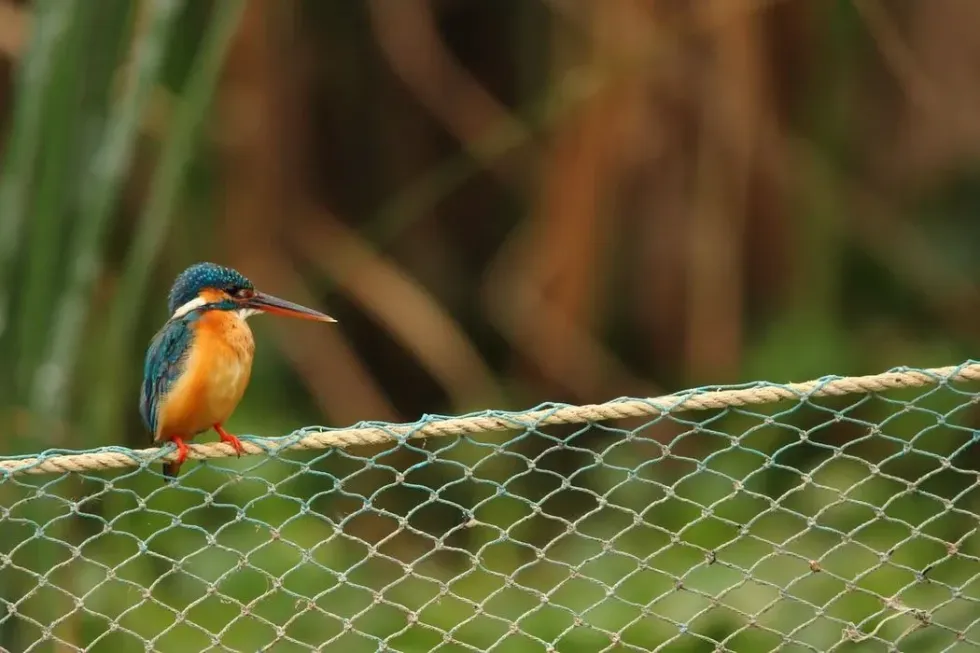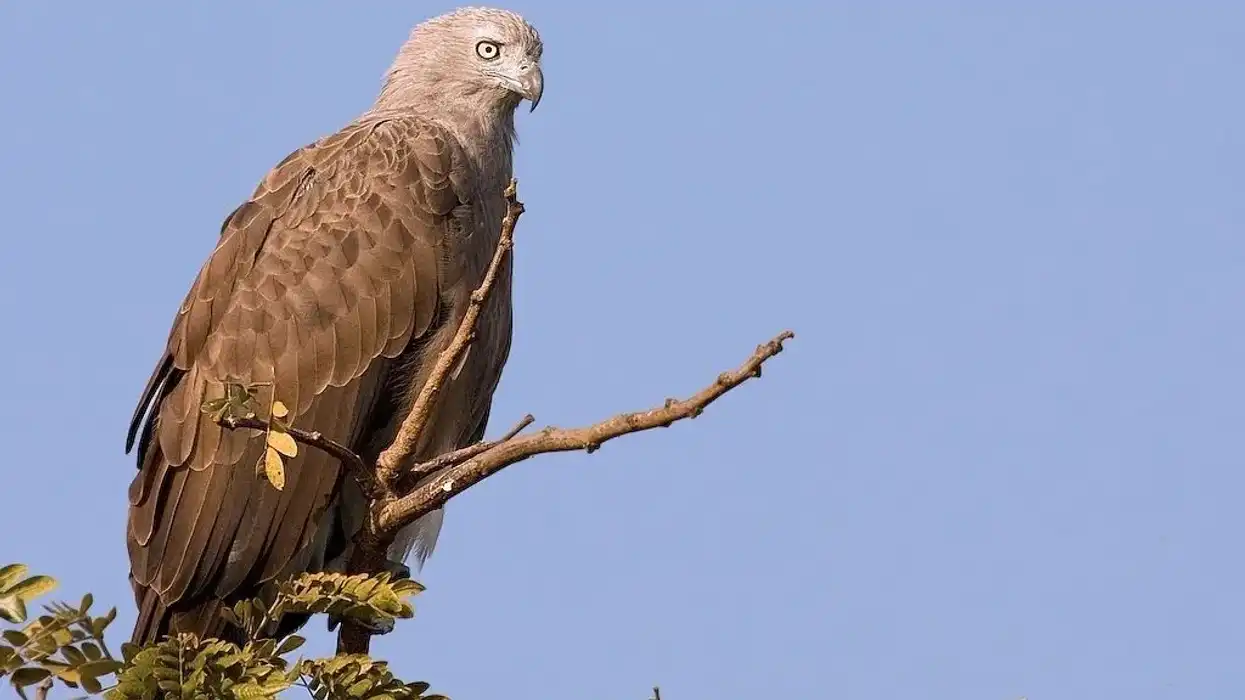The common kingfisher was first noticed by Carl Linneus. He was the first one to describe it in his 10th edition of 'Systema Naturae'.
The Latin words Alcedo atthis literally translates to kingfisher (Alcedo), while Atthis was a young and beautiful lady from Lesbos, who was also the ancient poet Sappho's favorite. This species is also known as a Eurasian kingfisher.
This bird can be found across Europe, Asia, and North Africa. There are seven different types of subspecies of this bird, however, during the winter season, kingfishers migrate from freezing winter lands and water bodies to warmer places.
This blue and orange-colored bird has a sharp beak and long beak that helps it catch its prey. It is almost the size of a sparrow and has a large head and a short tail. The upper parts of the common kingfisher are blue in color, while its underparts are orange and it also has a long bill.
The common kingfisher lives in solitude up until the breeding season. During this time it resides under heavy cover.
After mating, kingfishers lay a bunch of glossy eggs which are white in color. They make a nest beside the bank of a river, where the burrows end.
This is where the eggs are laid during breeding. Read on to learn about this fascinating bird.
To discover more animals, check out Carolina Parakeet facts and Frigate bird facts.
Common Kingfisher Interesting Facts
What type of animal is a common kingfisher?
The common kingfisher is a bird.
What class of animal does a common kingfisher belong to?
The common kingfisher Alcedo atthis belongs to the class of birds.
How many common kingfishers are there in the world?
Although the worldwide population of the common kingfisher bird does not have a specific set of data yet, it is known that an estimate of 160,000–320,000 common kingfishers can be found in the continent of Europe.
Where does a common kingfisher live?
The common kingfisher, also known as river kingfisher, typically lives in wetlands.
What is a common kingfisher's habitat?
As the river kingfisher lives in wetlands, it is generally found near water like slow-flowing rivers or streams. The common kingfisher habitat also includes clear water, and ponds. The kingfisher Alcedo atthis resides in areas beside lakes where there is an abundance of vegetation.
Who do common kingfishers live with?
Common kingfishers, scientifically known as Alcedo atthis, are essentially creatures who live alone. However, they show high signs of territoriality after they mate.
How long does a common kingfisher live?
Typically the kingfisher lives for a period of two years. The highest life span ever recorded for a common kingfisher is 21 years.
How do they reproduce?
The common kingfisher forms a monogamous pair with its partner, which means that it mates with only one partner. However, this is slightly different for the laughing kookaburra species.
In this species, you can find what is commonly known as 'helpers'. They are named so because they help another kingfisher pair in raising their young ones.
The blue kingfisher reproduces by laying eggs. For this reason, during the breeding season, the kingfisher builds nests that are typically on trees or near water bodies. As an exception, the kingfishers may build their nest in a termite cavity.
The kingfishers lay a batch of 2-10 white eggs. The small eggs are then cared for by both the male and the female kingfishers, that is, both the male and female parents, throughout the mating or breeding season.
What is their conservation status?
As their name suggests, common kingfishers can be found in large numbers and so are nowhere close to meeting the mark for population decrease, which is set at 30% for every three generations or 10 years. As a result, these common kingfisher birds fall under the category of Least Concern as their conservation status.
Common Kingfisher Fun Facts
What do common kingfishers look like?
These animals are very bright in color. They have orange legs which are short in appearance. Their underparts have a bright orange color as well. Their feathers are bluish-green. There is a bit of white color right under the beaks of these birds.
How cute are they?
The kingfishers are quite cute with their bright blue bodies. Their small, blue appearance makes the blue kingfisher lovely to look at.
How do they communicate?
The Alcedo atthis communicates by giving out a typical flight call. This common kingfisher call sounds similar to a "chee" or "tsee" sound.
Thus these kingfishers communicate with the use of their voice. Again, during mating season, the male kingfishers give out high-pitched whistles to the female they're attracted to. This is done in order to attract the particular female for breeding and increasing the population.
How big is a common kingfisher?
The common kingfishers are generally around 6.3 in length. These kingfishers have a wingspan of 9.8 in. The average size of kingfishers is 15 times smaller than the largest laughing kookaburra in the world, which resides in Australia.
How high can a common kingfisher fly?
Although the height of flight of river kingfishers is not known, these kingfishers are known to fly rapidly and in a straight path. Unlike any other bird, kingfishers cannot choose their pace of flight. These kingfishers have only one pace.
However, while catching small fish, aquatic insects, or any other fish, the kingfishers can hover over water, slow-flowing streams, and more. This bird can also fly underwater. It expands its wings underwater, then emerges head-first from the water to finally fly back to its habitat.
How much does a common kingfisher weigh?
This bird weighs between a range of 0.074-0.1 lb (34-46 g) with an average weight of 31 g. The heaviest common kingfisher hails from Australia and weighs approximately 500 g.
What are their male and female names of the species?
There are no separate names for the male and female gender of this bluebird. The bird is simply referred to as male kingfisher and female kingfisher.
What would you call a baby common kingfisher?
Young common kingfishers are simply called baby common kingfishers or chicks, similar to the young of other birds.
What do they eat?
A common kingfisher eats fish bones and other fish from water bodies. It preys on aquatic insects, small fish, and any other fish. However, not all kingfisher birds eat or prey on fish.
Are they friendly?
As these birds are mostly wild, they are usually not friendly.
Would they make a good pet?
Since the common kingfishers are wild in nature, they would not ideally make good pets. It is best that they are left in the wild to live freely and with others of their own kind.
Did you know...
The common kingfisher is special because of its vivid colors. Interestingly, although there is a total of 87 varied species of kingfishers, only the common kingfisher can be seen breeding in European cities. Due to their high rate of distribution, they can also be found on the Solomon Islands.
The common kingfisher is distinguished from other kingfishers by referring to it as the river kingfisher. It is so because there are many other kingfishers who do not even venture anywhere near water.
At times, the common kingfisher can travel up to 3,000 km during migration. However, mostly the British ones do not travel farther than 250 km, until and unless the severe winter forces them to. They also are known to migrate to Germany during the winter. Unfortunately, as many as 90% of British kingfishers are fatal to extreme winter conditions.
The common kingfisher is a species that needs to eat as much as its body weight each day. This leads to them eating about 15 or 16 minnows on a daily basis. Water beetles and dragonfly nymphs are also present in their diet.
On another note, the kingfisher cannot sing. Instead, it has a flight call that is high-pitched and shrill.
Adults mate in autumn, but they still live in solitude till the end of spring. It is only after spring that the pair comes together. In this regard, the birds are notorious for their dirty nests which are unhygienic. They are filled with droppings, pellets, bones, and other garbage.
What does the common kingfisher symbolize?
The kingfisher has many symbolic meanings. The common kingfisher is said to be the first bird to be present on Noah's ark.
The orange and blue colors of the bird refer to the setting sun, and the sky respectively. The common kingfisher symbolizes depth.
These birds, which are found in abundance in Europe, are symbolic of diving into the unknown and letting your fears take a backseat. It also conveys that you should never dismiss the messages from your dreams. All over the world, the common kingfisher is seen as a sign of wealth.
It also indicates peace and conveys a message of paying close attention to details present in your surroundings. The common kingfisher is symbolic of a balanced life as well.
How do common kingfishers fish?
Common kingfisher fishing mostly comprises plunging underwater to prey on fish bones, and other fish that may be available in the water. They target fish that swim right near the water surface and dive at a quick speed to catch them.
After catching the fish, the common kingfisher adjusts the fish in its beak. Following that, it moves the fish from its beak to its mouth and gulps down the fish, starting from the fish's head.
Here at Kidadl, we have carefully created lots of interesting family-friendly animal facts for everyone to discover! Learn more about some other birds including hornbill, or laughing kookaburra.
You can even occupy yourself at home by drawing one on our Common kingfisher coloring pages.










